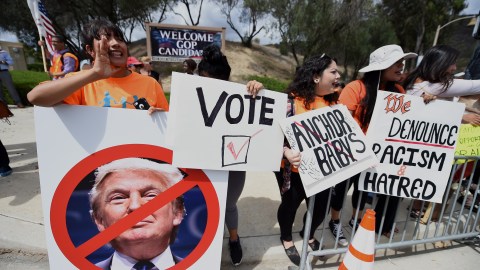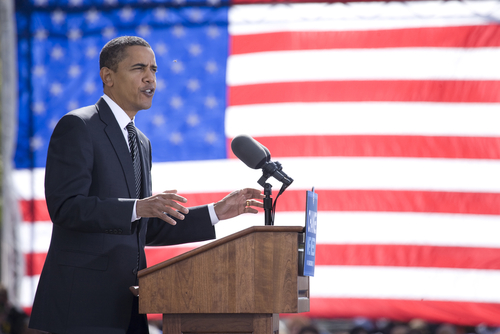4 Reasons Candidates Won’t Go After the Latino Vote This Election

The 4 truths about the Latino electorate that will impact the 2016 election:
1. Young people eligible to vote don’t show up to the polls.
2. Hispanics vote less often than other demographics.
3. The 2016 ballot will lack Obama.
4. Not many battleground states have a substantial Hispanic population.
One of the common motifs in political coverage is the looming shadow cast by the rapidly growing Hispanic electorate. Headlines across the media stress how important it is for the GOP to attract Latino voters, or how vital it is for Hillary Clinton to maintain support among young Hispanics. And while Latinos remain among America’s fastest growing demographics, a new report from the Pew Research Center suggests that the Hispanic electorate won’t impact the 2016 general election to quite the degree many people expect. Let’s go over the reasons for that.
First, as the report stresses in its lede, millennials make up nearly half of all eligible Latino voters:
“The median age among the nation’s 35 million U.S.-born Latinos is only 19 (Stepler and Brown, 2015), and Latino youth will be the main driver of growth among Latino eligible voters over the next two decades.”
The main issue here is that there’s a huge difference between eligible voters and registered voters: Only half of eligible Latino millennials actually registered to vote in the 2012 presidential election.
Even registered voters don’t always cast a ballot. Only 48 percent of eligible Hispanics actually voted in 2012, and only 37 percent of eligible Hispanic millennials. Compare those figures to the total population: 62 percent of eligible voters hit the polls that year. And among millennials: blacks (55 percent) and whites (47.5 percent).
You also have to factor in how much of an impact Barack Obama’s name on the ballot had on eligible millennials, whose support of the president was key to both his victories. It’s entirely possible fewer young voters will hit the polls this November due to lack of interest in the main candidates.
And even though Obama’s candidacy spurred the African-American electorate toward action, Marco Rubio and Ted Cruz, who are each of Cuban descent, are not expected to sway traditionally left-leaning Latino voters. (The other Republican frontrunner, Donald Trump, has about as much a chance of carrying the Latino vote as the Titanic does of reaching New York port this year.)
The second reason why we shouldn’t expect the youth-heavy Hispanic electorate to have a huge impact on 2016: They don’t reside in many of the key battleground states. The electorates of Virginia, Ohio, Wisconsin, Iowa, and Pennsylvania are each less than 5 percent Hispanic. The only three battleground states to feature over 10 percent Hispanic populations are Florida (18.1 percent), Nevada (17.2 percent), and Colorado (14.5 percent). It’s possible those three states, especially Florida, prove to be instrumental in deciding the presidency, but it’s just as probable that the race hinges on one or more of the others.
So, to summarize, these are the major reasons why the swelling Hispanic electorate won’t play as much of an impact on 2016:
1. Young people eligible to vote don’t show up to the polls.
2. Hispanics, especially young Hispanics, vote less often than other demographics.
3. The 2016 ballot will lack an Obama-esque leader capable of bringing millennials to the polls (and Hillary, trust me, the Abuela thing ain’t working).
4. Aside from a few notable examples, there aren’t many battleground states with a substantial Hispanic population.
All that said, just because the Hispanic electorate is having its awkward coming-of-age moment doesn’t mean it won’t be a force to be reckoned with in the future. Those Latino millennials won’t be in their 20s forever. The considerable growth of that demographic, coupled with the aging of others, means Latinos will be able to throw their weight around in the near future.
Just not that near.
—
Photo credit: Mario Bocelli / Shutterstock
Source: Pew
**
Robert Montenegro is a writer and dramaturg who regularly contributes to Big Think and Crooked Scoreboard. He lives in Washington DC and is a graduate of Loyola Marymount University in Los Angeles.
Twitter: @Monteneggroll. Website: robertmontenegro.com.





